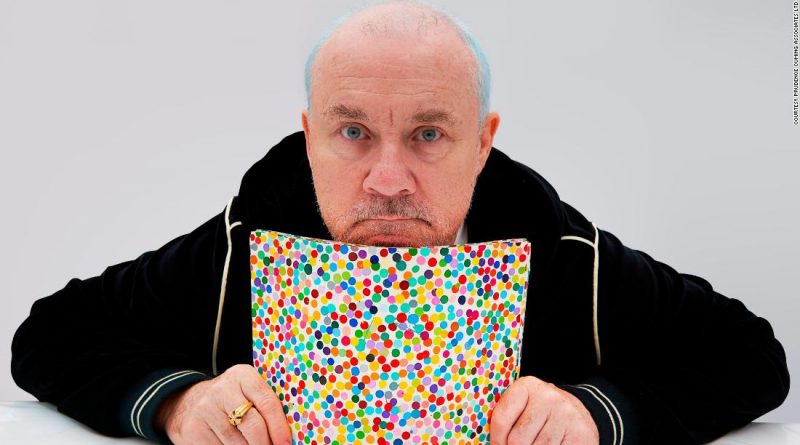Artist Damien Hirst to burn thousands of paintings for new project
Last year, Hirst issued NFTs for 10,000 of his signature “spot” paintings. Credit: Courtesy Prudence Cuming Associates Ltd.
At the time of publication, and with less than a day left to decide, 4,751 people had swapped their NFT for a physical work, with 5,249 buyers set to retain their NFTs.
Describing the project as his “most exciting by far,” Hirst told The Art Newspaper in March that it “touches on the idea of art as a currency and a store of wealth.” He added: “This project explores the boundaries of art and currency — when art changes and becomes a currency, and when currency becomes art. It’s not a coincidence that governments use art on coins and notes. They do this to help us believe in money. Without art, it’s hard for us to believe in anything.”
Related video: Why is art so expensive?
Of course, Hirst has been using the market as his medium for decades. In 2007, he made “For the Love of God,” a sculpture consisting of a platinum cast of an 18th-century human skull encrusted with 8,601 diamonds. In a move that predated the current trend for tokenizing art, the work was sold in August 2007 (for £50 million, then around $100 million, Hirst reportedly claimed) to a consortium that included the artist himself.
In 2008, during the week Lehman Brothers crashed and the global economy went into meltdown, Hirst sold 218 works directly from his studio via Sotheby’s auction house for £111 million (then over $200 million). Not only was the event unprecedented in its scale and ambition, it also cut out the gallery middleman — and ultimately flooded Hirst’s market, which has never truly recovered.

Hirst has described the projects as his “most exciting by far.” Credit: Courtesy Prudence Cuming Associates Ltd.
As for “The Currency,” the NFT marketplace that handled the initial sale, Heni, has been producing a monthly report analyzing the buying and selling of Hirst’s NFTs on the secondary market, which has sharply dropped in value since the project began and as cryptocurrencies have plummeted. The first report notes how, between July 30 and August 31, 2021, there were 2,036 sales of “The Currency” totaling $47.9 million. Meanwhile, in June this year, just 170 sales took place, bringing in a total of $1.4 million.
The resale of physical works appears to be faring better. In January, one of the original paintings sold at Phillips auction house in London for £18,900 ($23,000).




